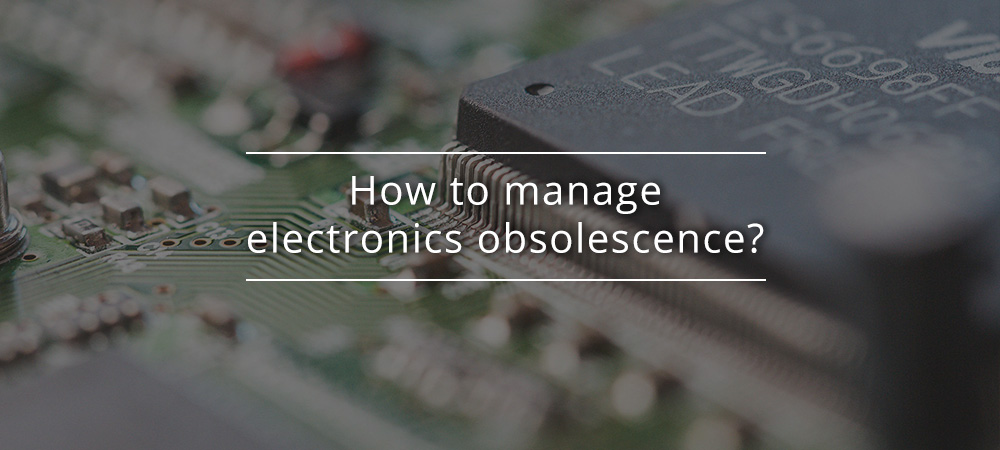
Obsolescence in the electronics field is a major issue and generates a lot of cost and resource spending that have to be removed upstream as much as possible.
Let’s analyse the following items to have better solutions to this issue.
1 – Product obsolescence
“That’s it, I’ve just got an email from the distributor about a reference on my PCB that has just become obsolete!”
This is the announcement of its service life.
Before rushing into anything, there are two important things to look at: the type of obsolete component and its actual end of production date.
The type of component on the PCB will give information about the action to take: passive components (resistors, diodes, connectors, etc.) or active components (microprocessor, micro-controller, ADC converter, driver, transceiver, etc.). In the first case there is an excellent chance of finding an equivalent, in the second, it’s more critical but not impossible.
As for its end of service life date, there is a certain number of abbreviations to define the component revision characteristics:
- The PCN (Product Change Notification) provides all the technical information about the changes made to this component: moved production site, changed product marking or different materials used. The PCN gives us the actual impact on the component, is the function the same or not? Should it be replaced or not?
- The EOL (End Of Line) defines the product stoppage but you can always find some on the market until the manufacturer stock is sold. We are given the LBD, Last Buy Date which is the last date for orders and the LSD, Last Ship Date, which is the last obsolete component shipping date.
There can be a year between the LBD and the LSD.
2 – The solutions
There are different palliative solutions depending on the obsolete component:
- Equivalence: Look for an equivalent product sold by other semi-conductor manufacturers. Most semi-conductor manufacturers have a “cross reference” menu on their web sites, on which you enter the exact obsolete product reference and which returns one or more equivalent components. Then look at the product datasheet, i.e. its technical sheet, to find all the data required to confirm the equivalence at the box, product function and technical specifications level (voltage and current levels required by the product to run).
- Sourcing: Sometimes there is no equivalence. This is frequent for very specific products such as microprocessors or specific peripherals such as E-MMCs (Embedded Multi-media cards), NANDs and micro-controllers. There’s only one solution, rework everything. During this product design phase, you can always find the obsolete product using brokers i.e. suppliers specialised in hard to find products. There are many on the market, therefore use the most reliable.
This transitional phase makes it possible to satisfy customers without interrupting deliveries of the impacted product.
and get your PCBA quote within the next 10 minutes!
3 – Prior action
It’s difficult to speak of preventive actions on the PCB design to redress obsolescence, but we can at least be prepared through prior actions.
Here are a few actions when choosing a strategic component to place on a PCB:
- Look for the “Production Status” at the supplier, is it a new product or is it not recommended for new designs?
- Ask the supplier for “Product Longevity” information
- Be careful of the datasheet creation date. A component created in 2000 is more likely to be replaced than one created in 2015. On the other hand, a very recent product may have been created for specific technology and require high purchase volumes, which means you should prefer something else.
In all cases, component obsolescence generates extra product costs. The new design, production tools, re-programming of tests; sometimes the replacement component overheads are all items that damage product competitiveness.
You should look at obsolescence in its most critical form, i.e. the permanent halt of the component, as a product improvement opportunity.
Written by Valérie LECONTE,
Production Manager at AIM.



